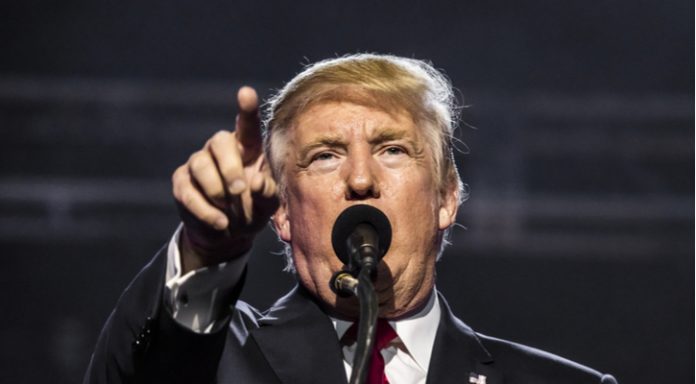The pound US dollar exchange rate experienced a choppy session on Thursday. Brexit headlines and another appearance by US Federal Reserve Chair Jay Powell and a Trump trade tariff saw the pound US dollar exchange rate trade a 200-point range from a high of US$1.3916 to a low of $1.3728, before closing almost flat.
| What do these figures mean? |
|---|
|
When measuring the value of a pair of currencies, one set equals 1 unit and the other shows the current equivalent. As the market moves, the amount will vary from minute to minute. For example, it could be written: 1 GBP = 1.28934 USD Here, £1 is equivalent to approximately $1.29. This specifically measures the pound’s worth against the dollar. If the US dollar amount increases in this pairing, it’s positive for the pound. Or, if you were looking at it the other way around: 1 USD = 0.77786 GBP In this example, $1 is equivalent to approximately £0.78. This measures the US dollar’s worth versus the British pound. If the sterling number gets larger, it’s good news for the dollar. |
Brexit headlines were once again responsible for pulling the pound lower in the previous session, as doubts surfaced again over the post Brexit transition period. EU Chief Negotiator Michel Barnier said in a speech, that UK businesses will not have absolute certainty over a post Brexit transition period until the end of negotiations, most likely early next year. Considering that Brexit is set to happen in March next year, this is not leaving UK businesses much time to prepare for either eventuality.
The growing tensions between the twos sides and the huge distance between the position of the EU and the UK is means any agreement is still a long way away. Furthermore. time is not a luxury that the negotiators have. Should no transition deal be agreed, the UK will head for a hard Brexit from the EU. This would present extremely tough challenges for UK businesses and could have a heavy impact on the UK economy. This would be bad news for the pound.
| Why is a “soft” Brexit better for sterling than a “hard” Brexit? |
|---|
| A soft Brexit implies anything less than UK’s complete withdrawal from the EU. For example, it could mean the UK retains some form of membership to the European Union single market in exchange for some free movement of people, i.e. immigration. This is considered more positive than a “hard” Brexit, which is a full severance from the EU. The reason “soft” is considered more pound-friendly is because the economic impact would be lower. If there is less negative impact on the economy, foreign investors will continue to invest in the UK. As investment requires local currency, this increased demand for the pound then boosts its value. |
Brexit remains in focus today, as UK Prime Minister Theresa May will give a landmark speech on Brexit. May will layout her vision for the post Brexit relationship with the EU. Any signs that she intends to distance the UK from the EU could pull the pound lower.
Fed Chair Jay Powell strikes a less hawkish tone: Trump starts a trade war?
The dollar experienced high volatility in the previous session as US Fed Chair Jay Powell made a second appearance in Congress in so many days. This time, Mr Powell was slightly more conservative in his tone, which surprised the markets given his optimism towards the US economy and his eagerness for more rate hikes only on Tuesday. This slight change of tone was enough to confuse the markets and resulted in whipsaw action in the price.
The dollar then dropped heavily, as President Trump announced trade tariffs of 25% on steel and 10% on aluminium. Market participants are nervous that Trump could ignite a trade war with China, Brazil or Canada, its main steel trading partners, which sent the dollar lower.
|
This article was initially published on TransferWise.com from the same author. The content at Currency Live is the sole opinion of the authors and in no way reflects the views of TransferWise Inc. |





